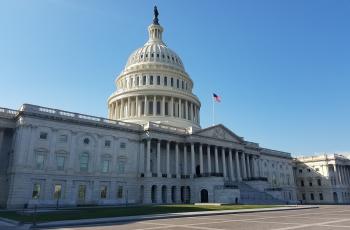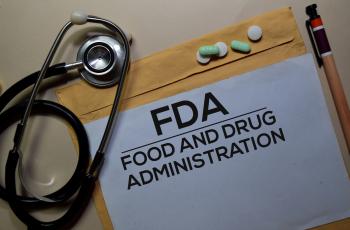Uninsured and Need Insulin?
Learn how you can get affordable insulin without insurance coverage
Updated on January 6, 2021
Leer este artículo en español.
If you are uninsured or have recently lost your employee-based insurance, it might seem like your options for managing your diabetes are limited. Challenges with access and affordability can increase the chance that people will ration or skip doses of insulin, leading to many serious complications like diabetic ketoacidosis (DKA) and visits to the emergency room. Everyone with diabetes should be able to afford insulin, regardless of whether they are covered by insurance.
Though insulin prices have increased over the years, there many programs that can help people who don’t have insurance get insulin and also save on costs – as a side note, profitability of insulin has actually declined, as shown through rebates and subsidies. Assistance and cost-saving programs are offered by a range of organizations, including pharmaceutical companies and retail pharmacies. Since each program varies by cost, type of insulin offered, and duration of supply, it’s important to explore your options carefully. We’ve organized details on various assistance programs and resources to help you navigate this.
What are my options?
Patient Assistance Programs (PAPs) make insulin free for those who are uninsured and meet certain income eligibility requirements. All programs require a prescription, but the applications vary in whether proof of income or additional paperwork is needed. Click here to read more about how to fill out an application for a PAP. The three insulin manufacturers all have PAPs:
Sanofi, Novo Nordisk, and Lilly have their own insulin savings programs for people. Sanofi and Novo Nordisk both cap a monthly supply of insulin at $99 (for ten bottles for Sanofi and three bottles for Novo Nordisk), while Lilly has recently introduced a $35 cap (no limit) in response to COVID-19.
-
Sanofi’s Insulins Valyou Savings Program offers up to ten vials or pens per month of any one or multiple Sanofi insulins (Toujeo, Lantus, Admelog, and Apidra) for $99/month to people who qualify. Unlike the Sanofi Patient Connection Program, the Valyou Savings Program does not use income level to determine eligibility. The Insulins Valyou Savings Card is valid for 12 consecutive monthly fills.
-
Novo Nordisk's My$99Insulin Cash Card Program provides 3,000-3,800 units (three vials or two packs of pens) of Novo Nordisk analog insulin (NovoLog, Levemir, Tresiba, Fiasp, Novolin) for $99 for up to 12 months. All people – including people who have commercial or private insurance, or government insurance like Medicaid and Medicare – are eligible for this program. Novo Nordisk announced on January 6, 2021 that they will extend their COVID-19 Patient Assistance Program, NovoCare, through June 30, 2021.
-
Lilly’s updated Insulin Value Program covers most Lilly insulins, including Humalog, for $35 per month regardless of the number of insulin doses required. Only people who don’t have insurance or people who have commercial insurance can qualify for this program. If you are currently using the Lilly Insulin Value Program savings card, you will need to renew your card for 2021. To renew your card, or find out more about the program, call the Lilly Diabetes Solution Center at 833-808-1234 or visit www.insulinaffordability.com.
Costco and CVS Pharmacy have discount prescription programs that provide cheaper medications to people. Savings are different for each program depending on the drug.
-
Costco has a discount prescription program for Costco members. The program may cover the medication you need if you use Costco pharmacies. For example, a 10ml vial of Novolin will cost $35.31 with the Costco Member Prescription Program.
-
CVS Pharmacy Reduced Rx – a discount card that can be used at more than 9,700 CVS Pharmacy locations. For example, a 10ml vial of Novolin will cost $25 with the Reduced Rx program. For someone paying out-of-pocket for insulin, this represents a potential savings of up to $100.
Prescription discount cards found at the following sites are available to anyone and are free to download and use. Each discount card has different details and different prices on certain medications; make sure that you research the card and read its information before you sign up so you know what to expect. Websites like GoodRx, LowestMed, and WellRx can also help you find the lowest price for your specific medication among pharmacies in your city.
Talk to your healthcare team. As a short-term solution, you may consider asking your healthcare professional for samples of vials or pens – some have these and some do not. This conversation can help you talk about changes to your prescription and how to document need for assistance programs.
What if I am in urgent need of insulin?
For immediate help, go to the emergency room or an urgent care clinic. If you’re experiencing symptoms of DKA, such as thirst, dry mouth, frequent urination, nausea, vomiting, severe abdominal pain, trouble breathing, or fatigue, call 9-1-1.
Insulin manufacturers have hotlines you can call to get direct assistance.
-
Lilly: Call 1-833-808-1234, Monday through Friday 9am - 8pm ET. The Lilly Diabetes Solution Call Center Helpline provides personal assistance for finding your lowest cost option (as long as you take or begin to use a Lilly insulin: Humalog or Basaglar).
-
Novo Nordisk: If you are in an emergency situation (at risk of rationing insulin and need insulin immediately to prevent serious danger), you are eligible for a free, one-time, immediate supply of up to three vials or two packs of pens of Novo Nordisk insulin. If you have a prescription for Novo Nordisk insulin and find yourself in this situation, you can call Novo Nordisk at 1-844-NOVO4ME (1-844-668-6463) or visit NovoCare.com for help.
-
Sanofi: Call 1-888-847-4877 to speak to a representative about financial challenges and how you can get connected to the medicines and resources you need.
At Walmart, you can buy insulin for $25 without a prescription (“over-the-counter”) and without insurance. It comes in a 10mL vial and is called Novolin ReliOn Insulin. It is offered in both regular human insulin (“R” – for use at mealtime) and NPH (“N” – a longer-acting basal insulin). You can also get Novolin at CVS Pharmacy for $25 per 10 mL vial through the Reduced Rx program. It’s quick to enter your email and get a discount card (which you can print or show digitally) that you can use immediately at 67,000 participating pharmacies nationwide, including CVS Pharmacy, Walgreens, and Walmart. Note that this insulin is less reliable for many people, so it’s often considered a “last choice” insulin.
Note that NPH and regular work differently from analog insulins:
- NPH lowers blood glucose over a period of more than 12 hours (its “duration of action”), and its peak glucose-lowering effect is at 4 to 6 hours.
- Regular insulin lowers blood glucose over a period of 6-8 hours. It peaks around 2-4 hours, and it is best taken 15 minutes before eating or right after eating a meal.
Because of these differences, be sure to talk with your healthcare team before switching to one of these insulins.
Visit a community health center in your area that can help you access insulin at a reduced cost. They will provide treatment regardless of insurance coverage and have a sliding scale payment system, so your medical cost will be related to your income.
Call 1-800-DIABETES and speak to an American Diabetes Association representative to learn about your options. This is available Monday through Friday, 9am to 5:30pm ET. They can connect you with appropriate resources in your area and can answer questions in English, Spanish, or any language with a language interpreter service. (Please note that ADA representatives can only answer non-medical questions. If you are in need of emergency medical service, call 911.)
For a full list of assistance programs, please see our Paying for Insulin resource page. If you want to learn more about access to diabetes care, click here.
To learn how you can prepare and stay healthy in the event of an emergency such as the COVID-19 pandemic, visit this page created by the Diabetes Disaster Response Coalition.


